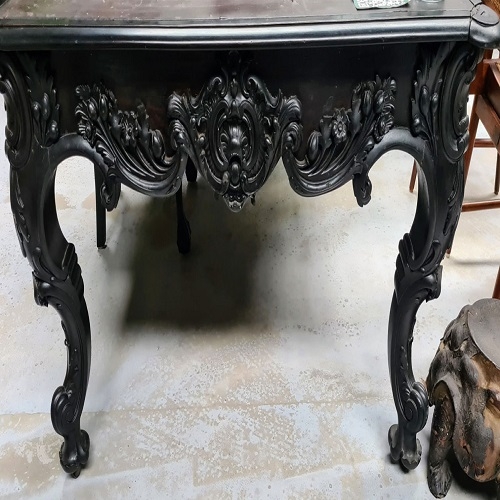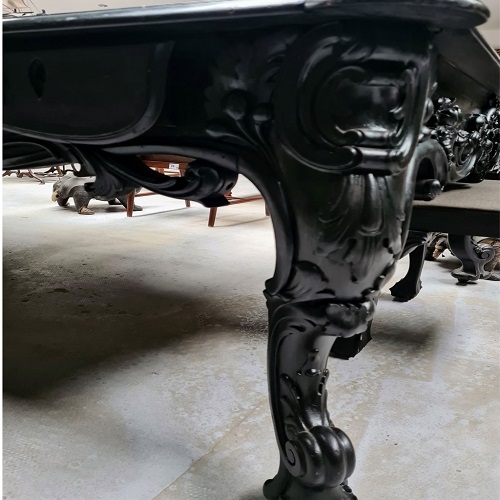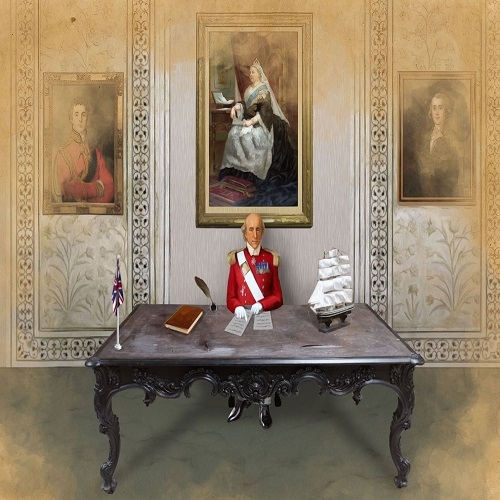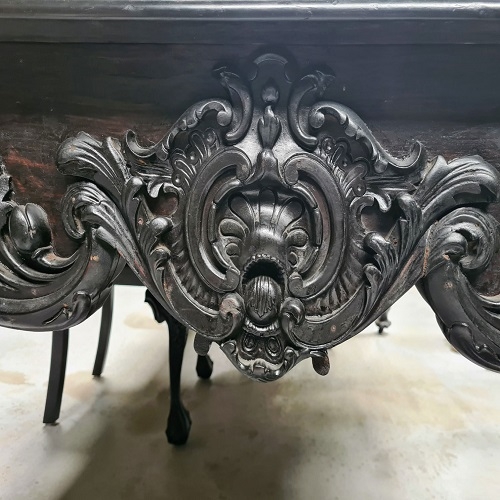You have no items in your quote list.
- Home
- Elegant Antique Colonial Style Table
Details




This grand yet elegant antique colonial-style table, circa 1900 beautifully captures the magnificence of the Victorian era, which was known for its furniture designs that drew inspiration from various styles, like Gothic, Renaissance and Rococo.
Another characteristic of the piece is its imposing size and intricate details. This table exemplifies the craftsmanship that defined that era featuring carvings that harmoniously blend elements from different historical styles.
What truly distinguishes this table as a representation of evolving style, is its departure from heavy upholstery and excessive ornamentation. Instead, its main purpose is to highlight the beauty of the wood and the leather table top, accentuating the patterns in the grain and embracing the imperfections that give it character and charm.
Victorian furniture was easily recognizable by:
- Dark finishes
- Elaborate carvings and ornamentations
For almost 100 years, Calcutta was the centre of production for Colonial-style furniture. It provided the Europeans residing in India with an alternative rather than carrying their furniture along with them through the long and arduous journey to India from Great Britain. The colonial influence and skill of Indian wood craftsmen paved the way for the generation of this new style of furniture which catered to the satisfaction of the users in India and Europe while leaving a significant impact which later led to the creation of the Anglo-Indian style of furniture.
Chippendale and Sheraton styles of furniture became famous in India and gradually the furniture began to be produced in India using locally available resources. The wood craftsmen of India were already renowned for their craft and the clients began modifying the furniture as they desired. This amalgamation of Victorian craft with the skill of Indian craftsmen gave way to the Colonial style of furniture.
As the Raj matured in India, the Colonial style furniture made of hardwood and other locally available products became common at the houses of Europeans and Indians alike. The maturity of the Colonial style furniture was achieved with the production of ebony furniture. Known as black gold for being one of the most expensive wood, ebony gave an exotic look. The dense wood was ideal for moulding and detailed carving. The development of the Colonial style of furniture increased interactions between the British ruling class and prosperous Indians with the wood craftsmen.
Characteristics:
Handcrafted
The Colonial style furniture unlike the Victorian style furniture from which it was inspired heavily, was handmade by wood craftsmen instead of using machines. This allowed the client to ask for desired modifications and additions to the furniture.
Rectilinear Form
The colonial furniture produced in India was devoid of curvaceous formations. The furniture was created along a straight line.
Lack of Ornamentation
Unlike the Victorian style of furniture of the age, the Colonial style furniture followed simplicity in its finishing. The motifs used were geometric patterns or natural forms like flowers, vines, leaves etc. The design of the rose was commonly used to provide an aesthetic appearance.
Stained wood
The furniture produced used naturally available hardwood to provide a sturdy structure to the product. Woods like mahogany, rosewood, and teak were not used with their natural colour but were allowed to be stained providing a dark appearance.
Chippendale legs
The most distinctive feature that the Colonial style furniture borrowed from the European style furniture was the use of Chippendale legs. It was S-shaped curved legs used in the furniture which ended into a carved foot designed as the lion’s paw, the ball, the club or the claw.
Absence of nails in joints
Since ancient times, the Indian craftsmen were renowned in Mediterranean and Arab nations for their skill in woodwork. The ships made in India were devoid of nails to join the different pieces of wood together. The same practice was followed in the construction of Colonial-style furniture in India. Two pieces of wood were tightly joined together by using the Mortise and Tenon joints.
Lacquer work
The finished product was polished with lacquer providing it with a waterproof coating. The application of lacquer provided durable and damage-resistant properties to the furniture. It also helped to protect the natural colour of the wood used for a longer time.
Additional Information
| Size | No |
|---|---|
| Height | No |
Wow Rentals is a South East based specialised event furniture hire company , we have a wide range of furniture at great prices. We supply within London as well as the East, South East & Midlands.
Add the Wow Factor to your events, contact us to meet your contemporary event furniture needs. We cater for all types of events from corporates to smaller events
Wow Rentals
Our Favorites
Artificial Tree Hire
Like us for updates
Wow London T/A Wow Rentals, 10 Harland Ave, Croydon, CR0 5QB. All Prices are Ex-Vat. Company number: 09056521 Contact Us

